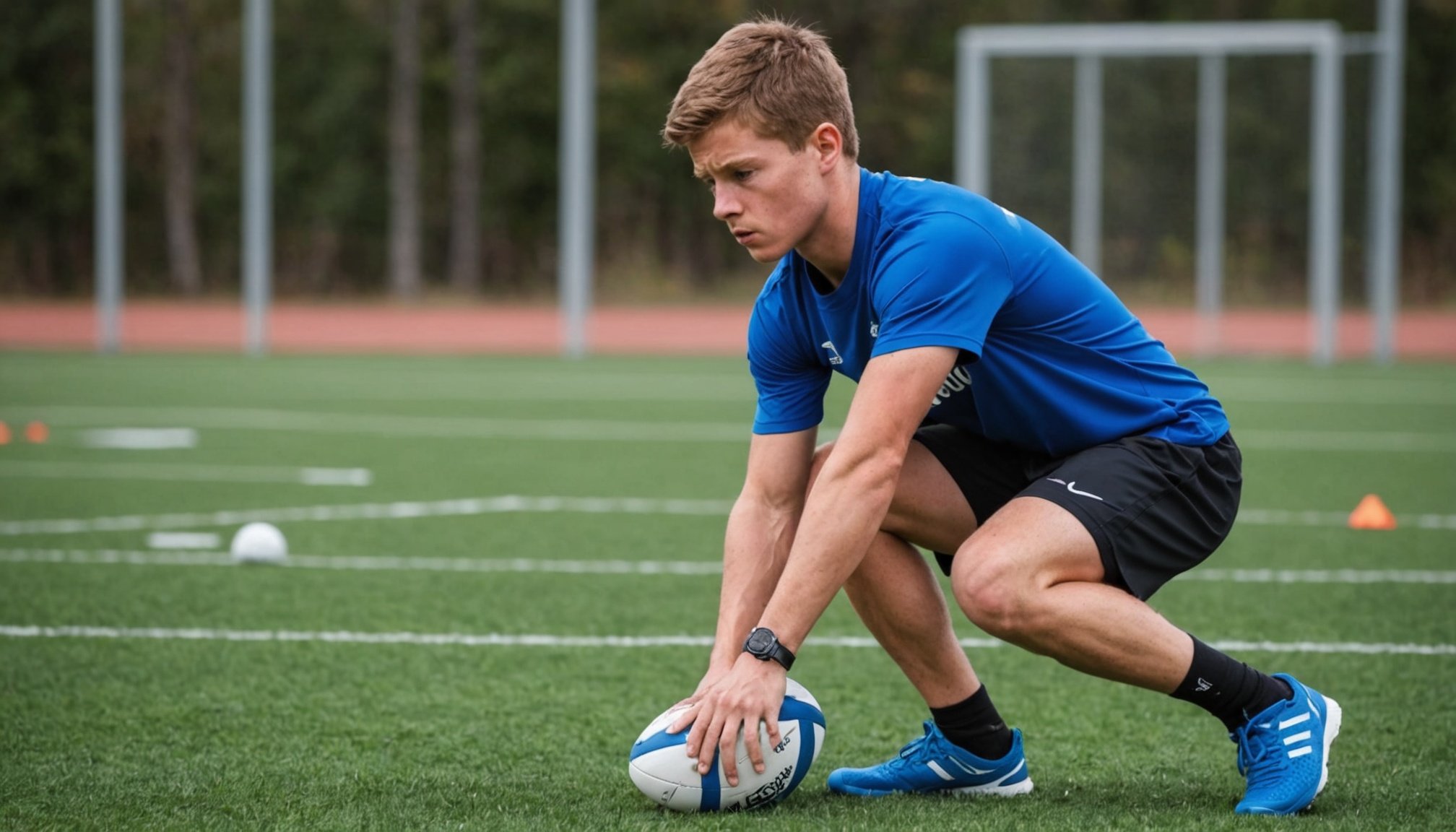Importance of Modifying Training Loads
In the world of young athletes, understanding training loads is crucial for both performance and injury prevention. Training loads refer to the combined stress placed on athletes during their sports routines. When managed properly, these loads contribute positively to an athlete’s development. However, when mismanaged, they increase the risk of overuse injuries. Such injuries result from repetitive micro-trauma on particular body parts, which is especially concerning for developing athletes.
The correlation between inappropriate training loads and injury risk highlights the necessity for tailored training regimens. Each athlete is unique, hence individualized training plans are vital. These customised plans should consider factors such as age, physical development, and level of expertise to balance their workloads effectively.
Also to see : Ultimate Guide to Acclimatizing Athletes for Success in High Humidity Conditions
Moreover, consistent monitoring and adjustments are key. Coaches and trainers equipped with the right knowledge can modify training sessions to align with the athlete’s growth curve. This approach not only prevents injuries but also promotes sustainable performance improvements.
By emphasizing understanding training loads, adults can help young athletes access safer training environments. Consequently, this nurtures their long-term athletic development and builds their confidence on their journey.
Also read : Mastering Dynamic Warm-Up Techniques for Youth Ice Hockey Teams: A Comprehensive Guide
Types of Overuse Injuries in Young Athletes
Young athletes frequently face overuse injuries due to repetitive stress from their sports activities. These injuries occur when muscles, bones, or tendons are pushed beyond their capacity, often without adequate rest. Common overuse injuries among young athletes include tendinitis, stress fractures, and growth plate injuries. Tendinitis arises from repetitive motion, often seen in sports like swimming where certain movements are continuously performed. Stress fractures, tiny cracks in bones, are typical in activities demanding high impact like running and basketball.
The impact of early specialization in sports is profound. Young athletes who focus on one sport year-round are at a higher risk of these injuries. This is because their bodies endure constant repetitive stress, leading to imbalances and improper development. Diversified sports participation allows the body to develop various muscle groups and skills, reducing the risk.
Case studies shed light on real-life instances of overuse injuries. One notable example includes young baseball pitchers developing elbow and shoulder issues from intense throwing. Such insights underscore the necessity of moderating training intensity and incorporating adequate rest to mitigate sports injuries in youth sports.
Factors Influencing Training Load Modifications
When assessing training load factors for young athletes, multiple elements play a crucial role. Firstly, athlete development is significantly impacted by age, skill level, and sport type. Younger athletes may require a different approach compared to those who are older and more experienced. The skill level of an athlete dictates the intensity and volume of their training, while the sport type influences the specific demands placed on the body.
Monitoring the physical and psychological readiness of athletes is essential. Modification strategies should include keeping an eye on signs of overtraining, such as fatigue, mood swings, or decreased performance. The use of technology, like wearables, can aid in tracking an athlete’s readiness by providing data on heart rate and movement patterns.
A balanced approach is necessary for effective modification strategies. Consider individual variations in response to training and how different environmental factors, like temperature and humidity, might affect an athlete’s performance. By tailoring training loads, athletes can avoid burnout and foster sustainable development. Regular feedback and communication between coaches and athletes are vital in adjusting training programs according to the needs of the individuals involved.
Best Practices for Training Load Management
In the realm of sports and athletic development, Training Load Management is critical for safeguarding athletes’ health and performance. By balancing training intensity and recovery, we can optimise outcomes and minimise injury risks. Employing Injury Prevention Techniques is integral in this process. Among these techniques, monitoring the training load closely is essential in maintaining athletes’ well-being.
Evidence-Based Practices advocate a systematic approach to managing training loads. These practices incorporate quantitative methods to assess the impact of training regimens. Implementing such strategies involves a comprehensive review of an athlete’s workload and physiological responses. Coaches and parents can benefit immensely by adopting a structured plan.
When it comes to practical tips, using digital tools for monitoring, such as wearables and mobile apps, offers a reliable way to track data in real-time. This constant feedback helps in adjusting training loads based on the individual’s needs. The use of these tools can support effective communication between athletes, parents, and coaches.
Moreover, ensuring athletes get adequate rest and recovery is key, as it facilitates adaptation and reduces chances of overtraining. Prioritising education about these practices enables a sustainable training environment and fosters long-term athletic development.
Expert Insights and Recommendations
To prevent overuse injuries, sports medicine professionals emphasise the critical role of expert advice. Athletes often overlook subtle signs of injury, which highlights the importance of communication between coaches, athletes, and parents. It ensures early detection and intervention, effectively mitigating risks.
Injury prevention strategies incorporate regular assessments and adjustments in training plans. These assessments help identify areas of potential strain before they escalate into injuries. By systematically evaluating an athlete’s physical condition and workload, plans can be personalised. This approach not only optimises performance but also prioritises health.
Sports medicine professionals recommend maintaining a dialogue among all parties involved. This dialogue fosters understanding and ensures everyone is on the same page regarding an athlete’s well-being. Parents, in particular, should remain informed about their child’s physical progress and training intensity.
In addition, implementing practical strategies such as cross-training can be beneficial. It involves varying exercises to afford different muscle groups recovery time, thus reducing the likelihood of overuse injuries. It is these smart, evidence-based adjustments that truly make a difference, demonstrating the value of seeking and following expert advice.
Developing an Individualized Training Plan
Designing an individualized training plan for young athletes entails multiple steps to ensure it caters to their unique needs and abilities. Initially, it’s crucial to conduct a thorough assessment of the athlete’s current skill level and physical condition. This helps tailor the plan effectively, focusing on athlete-specific strategies that enhance their strengths and address their weaknesses.
Incorporating continuous feedback and regular assessments is a key component in training plan development. By doing so, adjustments can be made to keep the training relevant and optimal. Through these assessments, coaches can evaluate what works best and adapt to the evolving needs of the athlete, ensuring that the training remains aligned with their personal goals.
Rest and recovery are often underestimated, yet they play a pivotal role in maximizing performance and preventing injury. An individualized training plan should include strategically scheduled rest days and recovery sessions to facilitate muscle repair and enhance overall athletic performance. These elements are as critical as the active training sessions, helping maintain the delicate balance between effort and recuperation.
Monitoring and Adjusting Training Loads
Understanding the nuances of monitoring training is pivotal for optimizing athlete performance and wellness. Coaches and trainers employ diverse techniques to assess athletes accurately. Regular evaluations through training load assessment help in capturing critical data on performance metrics, where changes are most often necessary. Monitoring involves observing variables like heart rate, perceived exertion, and recovery times.
Recognising signs for adjusting loads is essential in preventing overtraining. Symptoms such as chronic fatigue, persistent muscle soreness, or declined performance indicate the need for change. Responsively adjusting training loads benefits long-term athlete health and competitive potential.
Utilizing charts is a powerful strategy in facilitating load adjustments. Charts offer a visual representation of an athlete’s performance over time, making it easier to identify trends or anomalies. Furthermore, engaging with injury risk assessments aids in proactively managing training strategies, thus minimising injury occurrence.
Adopting both qualitative and quantitative measures effectively ensures that training loads remain optimal. Precision in this analysis not only guards against injury but also fosters a sustainable, progressive path towards peak performance. This holistic approach promotes a healthier, more informed athlete environment.
Understanding Overuse Injuries in Young Athletes
Overuse injuries are inevitable companions in the competitive world of youth sports. Defined as damages occurring from repetitive trauma rather than an acute event, they encompass various ailments such as stress fractures, tendinitis, and bursitis. These injuries arise when young athletes engage in repetitive activities, often without adequate rest, which exhaust the same muscle groups or joints.
The rise of overuse injuries is influenced by multiple factors. One primary factor is intense specialisation, where young athletes focus on a single sport all year round, limiting their variety in training. Furthermore, insufficient recovery periods during rigorous training schedules can exacerbate the risk. It’s crucial to acknowledge that growing bodies are still developing, and intense physical demands can have long-term impacts.
Promptly addressing overuse injuries is paramount. Untreated, these injuries can lead to chronic pain and hinder the athlete’s development and performance. Early intervention, coupled with proper injury prevention strategies—like balanced training regimens and emphasis on rest—can significantly reduce their incidence. Implementing structured injury prevention programs is key to maintaining the health of young athletes, ensuring they remain active and enjoy sports safely.
Key Principles for Modifying Training Loads
Maintaining the right balance between training loads and athlete development is crucial in youth sports. Proper load modification can significantly reduce the risk of injuries, a concern often overlooked due to the eagerness to enhance performance swiftly.
Effective training principles involve understanding how to manage and adapt training loads appropriately. For youth athletes, it’s essential to appreciate their unique growth patterns and developmental stages. This helps in creating a training regimen that accommodates their current capacity and paves the way for gradual improvement.
One key concept is recognising the link between training load and injury risk. Excessive loads imposed suddenly can lead to overuse, affecting muscles and joints adversely. Therefore, the essential rule is to modify training loads progressively.
Guidelines advocate for a gradual load progression, increasing intensity incrementally to monitor and ensure the athletes’ comfort and safety. The aim is to increment loads no more than 10% per week, allowing the athletes’ bodies to adapt effectively without overwhelming them. Creating a structured and adaptable training plan fosters a positive growth trajectory, reducing potential injury risks while optimising performance gains.
Evidence-Based Load Modification Strategies
In the world of sports training and athletic development, evidence-based practices are paramount. At the heart of these practices are load modification strategies, aimed at optimizing performance while minimizing injury risk.
Recommended Load Adjustments
Implementing tailored load modifications is crucial. Weekly adjustments informed by performance metrics, such as training logs and physiological data, ensure athletes remain in peak condition. Consider hourly training volume changes based on direct athlete feedback. Monitoring sessions closely and responding to immediate needs can make a significant difference in training effectiveness.
Techniques for Training Load Monitoring
Incorporating tools for tracking training loads, such as heart rate monitors and GPS devices, offers valuable insights into athlete exertion levels. Equally essential are subjective measures like perceived exertion scales, which provide personal feedback on how hard a session feels to the athlete. This dual approach to load monitoring allows for a comprehensive understanding of an athlete’s workload.
Implementation of Periodization
Periodized training plays a pivotal role in effective load management. Structured variation in training intensity and volume to prevent overtraining and facilitate recovery. Customising periodization based on age and skill level ensures that training demands align suitably with an athlete’s development and capability.
Case Studies and Real-World Applications
Exploring case studies and their real-world applications helps us appreciate how theory translates into action. In youth sports, load modification has become a vital strategy for injury prevention. By examining case studies, we see how coaches have successfully adapted training schedules, integrating rest days and lighter sessions to manage fatigue. These real-world adjustments not only reduce injury risks but also improve performance through optimized recovery.
One exemplary practical example is the introduction of periodized training in a youth football league. Coaches implemented alternating cycles of high-intensity and low-intensity practices. This approach allowed young athletes to maintain high performance while minimizing injury.
Lessons from these studies highlight the importance of flexibility in coaching strategies. For instance, successful programs prioritize individual assessments, aligning training loads with each athlete’s developmental stage and physical capacity. Coaches benefit from real-world applications by focusing on tailored training plans, encouraging safe progression, and reducing burnout.
These examples show how adapting evidence-based methods in real situations can lead to successful outcomes in youth sports, emphasizing the crucial role of informed decision-making in coaching. Understanding and applying these lessons fosters safer and more productive sporting environments.
Age-Specific Considerations in Training Loads
Understanding age-specific training requirements is essential for optimizing performance and minimizing injury risk. The physiological responses to training can vary significantly with age, necessitating adjustments to workloads. For instance, youth athletes often have higher recovery rates but require careful monitoring to ensure proper development.
Differences in Physiological Responses by Age
Age impacts how the body reacts to various training intensities and volumes. Younger athletes may benefit from more frequent, shorter sessions to accommodate their developing musculoskeletal systems. Conversely, adult athletes can often handle higher workloads due to more mature muscle structures and metabolic systems.
Modifying Loads Based on Development
Recommendations for adjusting training loads consider developmental stages. During early adolescence, focusing on skill acquisition and coordination, rather than intense physical stress, is essential. As athletes mature, progressively increasing intensity and volume becomes feasible.
Importance of Individualized Approaches
Individualized training approaches ensure that each athlete’s unique capabilities and limitations are addressed. Coaches should tailor programs to fit the specific developmental considerations of each athlete, acknowledging factors such as growth spurts and varying developmental rates. This personalization fosters optimal progression and minimizes injury risk.
Role of Healthcare Professionals and Coaches
The collaboration between healthcare professionals and coaches is vital in promoting athlete well-being. When these two groups work together, they bring balance to sports environments by merging medical expertise with practical coaching strategies. Healthcare professionals provide insights into injury prevention and management. Their role is crucial in ensuring that athletes receive the best care during training and events.
Meanwhile, coaches can benefit significantly from education and training offered by healthcare teams. Understanding medical guidelines and implementing injury prevention programs enhance their ability to train athletes safely. This relationship isn’t just about sharing knowledge; it’s about creating a supportive network for athletes.
Effective team collaboration is all about clear communication. Coaches, healthcare professionals, athletes, and parents must engage in open dialogue to discuss potential risks and the best approaches to address them. By using effective communication techniques, these teams can ensure everyone is informed and aligned toward the same goals. This synchronization helps in addressing concerns proactively and building trust.
Successful sports programs depend on the collaborative efforts of both healthcare professionals and coaches, fostering a safer and more supportive environment for athletes.
Monitoring and Responding to Athlete Feedback
Feedback from young athletes is crucial in shaping effective training programmes. Regular athlete feedback provides invaluable insight into how well training strategies are resonating with participants. By closely monitoring this feedback, coaches and trainers can develop adaptive strategies that tailor the training loads to the athletes’ responses. It’s essential to incorporate flexible approaches that can adjust based on the immediate needs and observations derived from athlete input.
To foster an environment where athletes feel comfortable providing their observations, techniques such as open dialogues and non-judgmental environments are pivotal. Encouraging athletes to share their training experiences without fear ensures a more accurate understanding of what adjustments might be necessary.
Incorporating methods such as anonymous surveys or one-on-one discussions can be very effective. These approaches help in understanding the nuanced ways in which training programmes can be improved, allowing trainers to craft individualized response to training plans. Through these monitoring strategies, trainers will find better alignment between the goals of the programme and the athlete feedback. This constant loop of feedback and adjustment not only enhances training effectiveness but also promotes positive athlete development.











